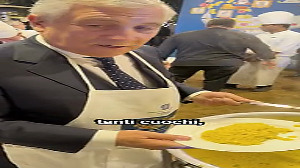Deflation led by fuel price fall and it is unclear if structural factors are under control.
The inflation print for November at zero per cent suggests the economy continues to deflate.
Last week, the Consumer Price Index-based inflation for the month had contracted to 4.4 per cent.
On Monday, month's the Wholesale Price Index-based inflation was revealed to have has hit zero, compared to the 1.77 per cent growth in October.
While the sharp contraction in WPI has been broad-based, the fall in fuel prices, 5.4 per cent compared to the previous month, was visible.
Fuel and power have a weight of 14.91 per cent in the index. Manufacturing products (64.97 per cent weight) declined 0.3 per cent.
About 35 per cent of WPI components are in deflation, the most notable being vegetables, mineral oil and coal, says Sujan Hajra of Anand Rathi.
Both WPI and CPI inflation prints suggest the global rout in commodity prices have played a big part in taming inflation.
What has helped is the base effect on food prices.
Core inflation in CPI also showed a sharp moderation because of lower fuel prices. Food prices have remained largely stable, thanks to the government for releasing stocks and managing the minimum support price increases a little better.
None of this suggests India has won the battle against structural issues.
Demand has collapsed and so have the price of most manufactured products but this could be temporary.
According to Suvodeep Rakshit and Indranil Pan of Kotak, while the short-term drivers of inflation like commodity prices or MSPs remain comfortable, rectification in the long-term drivers like rural wages and structural friction (hoarding, storage and logistics) will be important for retail inflation.
The benefit of the base effect in food prices is expected to fade after December, when economists expect these to again pick up, given the erratic monsoon rain.
Disinflation in the economy continues what the Reserve Bank of India also wanted to achieve but the sustainability of this trend and an untimely reversal in inflationary trends is something RBI will have to assess.
An inordinate delay in cutting rates does pose a risk, as it will damage a pick-up in growth.
On the other hand, an untimely cut in rates before taming inflation could prove costly.
As the rest of the world is also facing disinflation trends, which have pulled down prices of commodities, a cut in benchmark interest rates is not alone going to be a cure for slower global growth.





.jpg)





